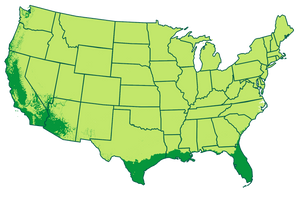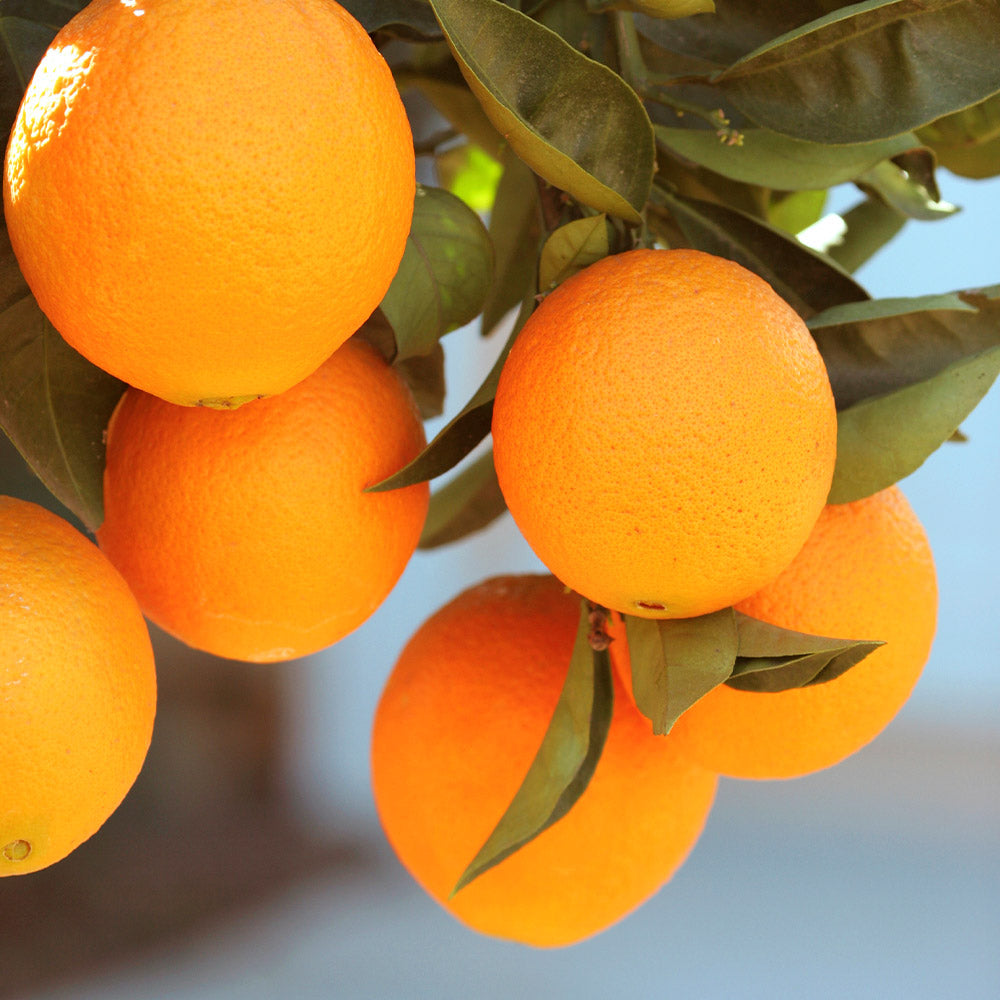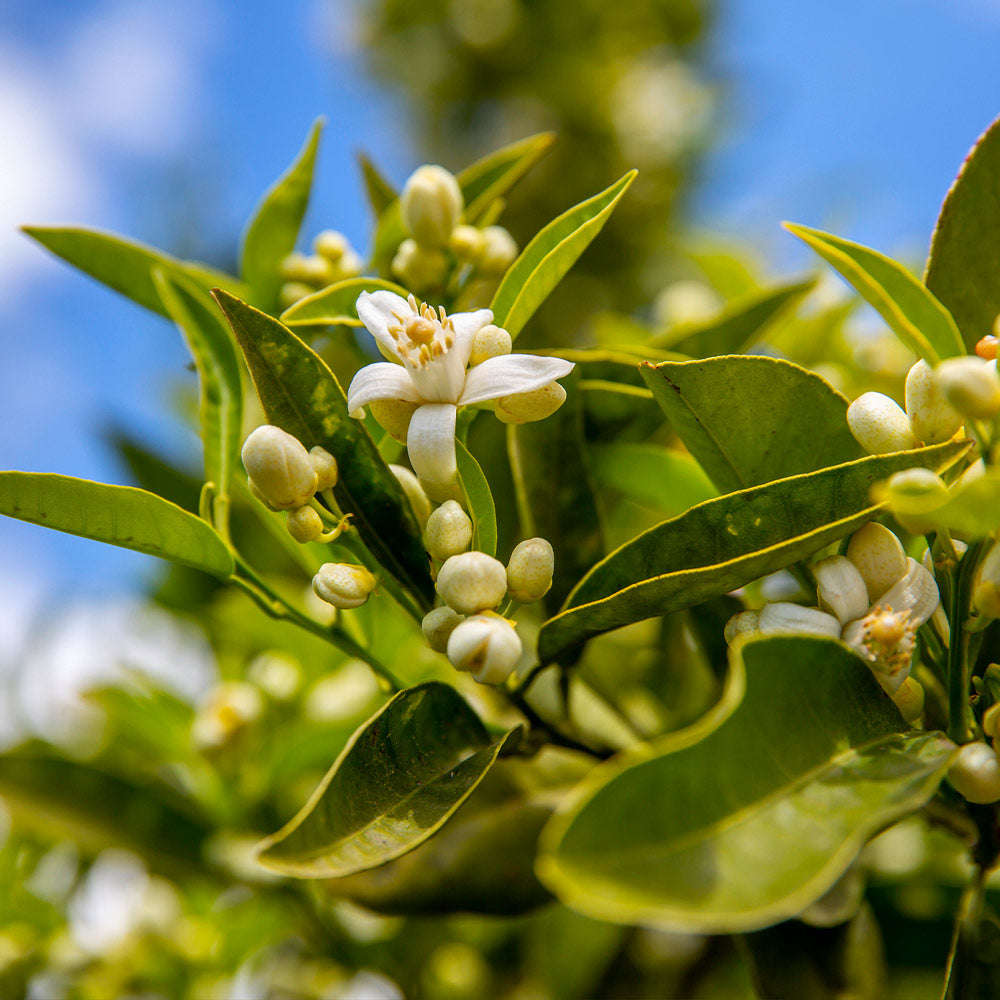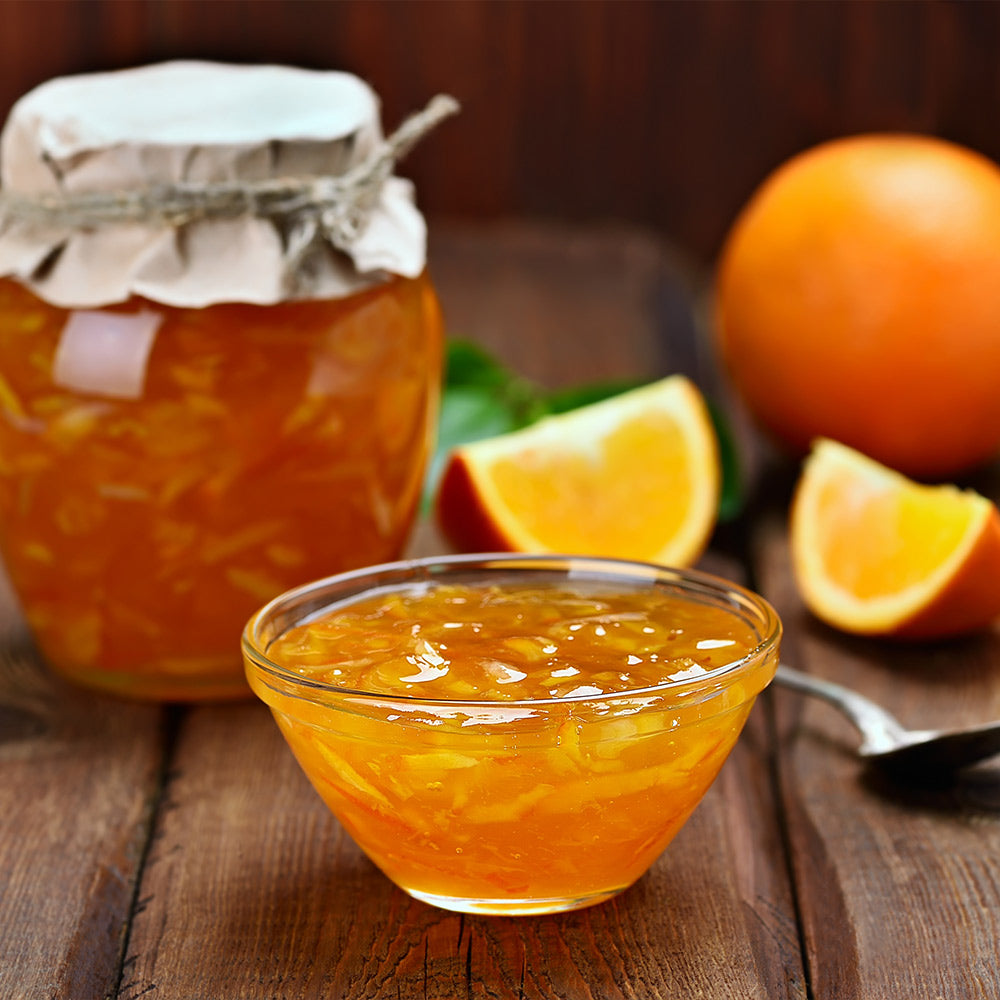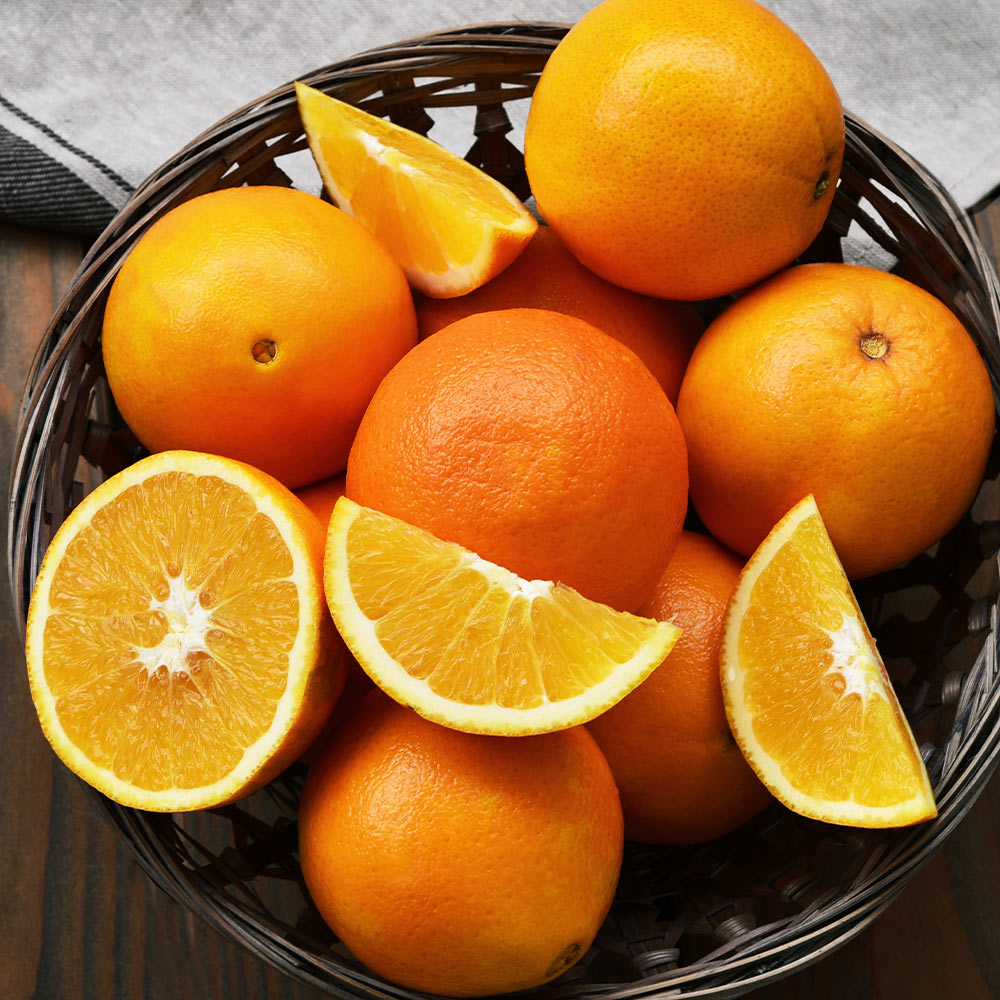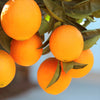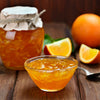* Images shown are of mature plants

Have questions? Talk with our Plant Experts (800) 973-8959
Save 25% on $200+ with code FALL25.
Questions? Call our plant experts: (800) 973-8959
Juicy Oranges All Year Long!
Enjoy your harvest in the warm summer months. The crisp, refreshing taste of juicy oranges is really appealing in the heat of summer, but most naval orange trees only produce fruit in the winter. Fortunately, the Lane Late harvest season is late spring and the fruit stays ripe on the branch for months. Just as summer rolls around, you'll be able to pick fresh oranges right from your very own backyard.
Lane Late Oranges are a sweet treat you don't have to feel guilty about. Known for their sweetness and juiciness, biting into one of these oranges may feel like an indulgence, but these oranges are packed with nutrients and vitamins. Just one Lane Late Orange has all the Vitamin C you need for the entire day. Plus, the carb and fiber content make you feel fuller, faster.
Grow them anywhere in the country. It's ok if you live in a colder state, because these small trees can be potted and brought inside during the colder months. By placing your Lane Late Orange tree near a sunny window, you'll give it all it needs for a bountiful harvest.
Brighten up your home and garden with this cheerful tree. Not only will you enjoy the tempting sweetness of the oranges, but you'll love watching the evergreen tree throughout the seasons. The big, dark green leaves contrast against the white, fragrant blossoms that turn into bright, orange fruit. The contrast throughout the year adds interest during every season.
Plant one tree or several to brighten up your yard. The evergreen leaves and bright fruits and flowers will add liveliness to any spot in your garden or home. The summery energy given off by the tree makes a great contrast against dormant plants in the winter. In the summer, the tree can complement your colorful blue blooms and cool toned plants.
Find plenty of uses for your Lane Late Oranges. This seedless variety makes excellent additions to your favorite meals. The rind is smoother than other oranges, making Lane Late Orange peels a great choice for garnishes. Staying ripe on the branch, these juicy oranges are perfect for spontaneous fresh-squeezed juices.
Order today and get ready to have big, juicy oranges all throughout the year. There's hardly any work involved in growing Lane Late Oranges. Once you plant them, it's just a matter of waiting, so don't hesitate to order your tree today!
Pollination Info
Lane Late Navel Orange Tree Pollination
Lane Late Navel Orange Trees are self-fertile. You will get fruit with only one plant. However, adding an additional Lane Late Navel Orange Tree will drastically increase the size of your crop.
Planting & Care
Outdoor Planting Instructions: Choose a spot in your yard that receives at least 6 hours of sun every day. Make sure the soil is well-drained and the area is free from grass, which will compete for water and nutrients. Dig a hole in the ground that is twice as wide as the root ball. Place your tree in the hole, with 1 inch of the root ball sticking out from the top of the soil. Water thoroughly after planting. Add a thick layer of mulch around the base of the tree, but keep the mulch 6 inches away from the tree trunk.
Container Planting Instructions: Plant your tree in a large barrel such as a whiskey barrel or a 20-gallon pot. Plant in well-draining soil and make sure your container has proper drainage holes. Your tree may become heavy, so adding casters to the bottom of your container can help you transport your tree inside during the winter. Place a layer of rocks on the bottom of your container to aid in drainage, then add your soil and tree, making sure the tree stands vertical and upright. Bring your tree inside when the temperature reaches below 25 degrees Fahrenheit.
Watering: You only need to water your tree when the soil is dry. For trees planted in the ground, check the soil at a depth of 5 inches. For container plants, check the soil at a depth of 2 inches. Depending on the humidity in your area, you will likely only need to water your tree once a week. The roots of the orange tree are wide, so be sure to water past the drip line for trees that are planted in the ground.
Fertilization: You will need to add a citrus fertilizer to your tree during its harvest. When you begin to see fruit, apply your first round of citrus fertilizer according to package directions for the size of your tree. Add additional doses of fertilizer every month or two during the entire harvest season. You will also need to add a dose of fertilizer twice during the dormant season. As your tree matures, you can increase the time between dosing during the harvest season, and you can skip the dormant fertilization all together.
Pruning: It is not recommended that you prune orange trees, expect to remove dead and diseased branches. You can prune your tree to maintain its shape and height, but be sure to do so before the harvest season. If your tree is planted outside, you will need to whitewash any pruned branches to protect them from chill.
Pests: When watering your tree, spray the leaves and branches with a hose to knock off any larva or eggs. If you see any eggs, larva or worms sprayed off, be sure to put them in a sealed trash bag and throw them away to prevent them from re-inhabiting the tree. Keep the area around your tree free from grass and prune off any branches that touch the ground. These measures will prevent ant infestations. You may also spray your tree with insecticidal soap at the beginning of the harvest season. If your tree becomes infested, you will need to use an insect oil to rid the tree of pests and prevent diseases.
Harvesting: Do not use color as an indicator of whether or not your orange is ripe. Instead, learn your tree's habits by occasionally picking fruit to determine how ripe it is. Ripe fruit will be firm and juicy, but not soft or moldy. You can wait for fruit to fall or you can pull the fruit from the branch.
Storage: Once picked, oranges will not continue to ripen. You can store oranges in your pantry for up to a week. However, oranges will also stay fresh in the refrigerator for a month. To freeze oranges for juicing, simply wash them and cut them in half. They will keep in freezer safe containers for up to a year. You can also peel and cut your oranges and freeze them in the same way. You can also use a wet pack method, which involves storing peeled oranges in a container with a 40% sugar-water syrup. This process keeps the oranges very juicy and sweet.
Shipping Details
Estimated Shipping Time: Most orders ship immediately. As noted on the website, some items are seasonal, and may only ship in spring or fall. Once your order is shipped, you'll receive an email with a tracking number.
| Amount of Order | Shipping Charge |
|---|---|
| Less than $49 | $19.95 |
| $49 + | FREE SHIPPING! |
Product Details
| Mature Height: | 8 ft. |
| Mature Width: | 8-12 ft. |
| Sunlight: | Full-Partial |
| Growth Rate: | Moderate Growing |
| Harvest Time: | Fall |
| Botanical Name: | Citrus sinensis 'Lane Late Navel' |
| Does Not Ship To: | AK, AL, AZ, FL, GA, HI, LA, OR, TX |
| Grows Well In Zones: | 3-11 patio / 9-11 outdoors |
| Your Growing Zone: | # |
